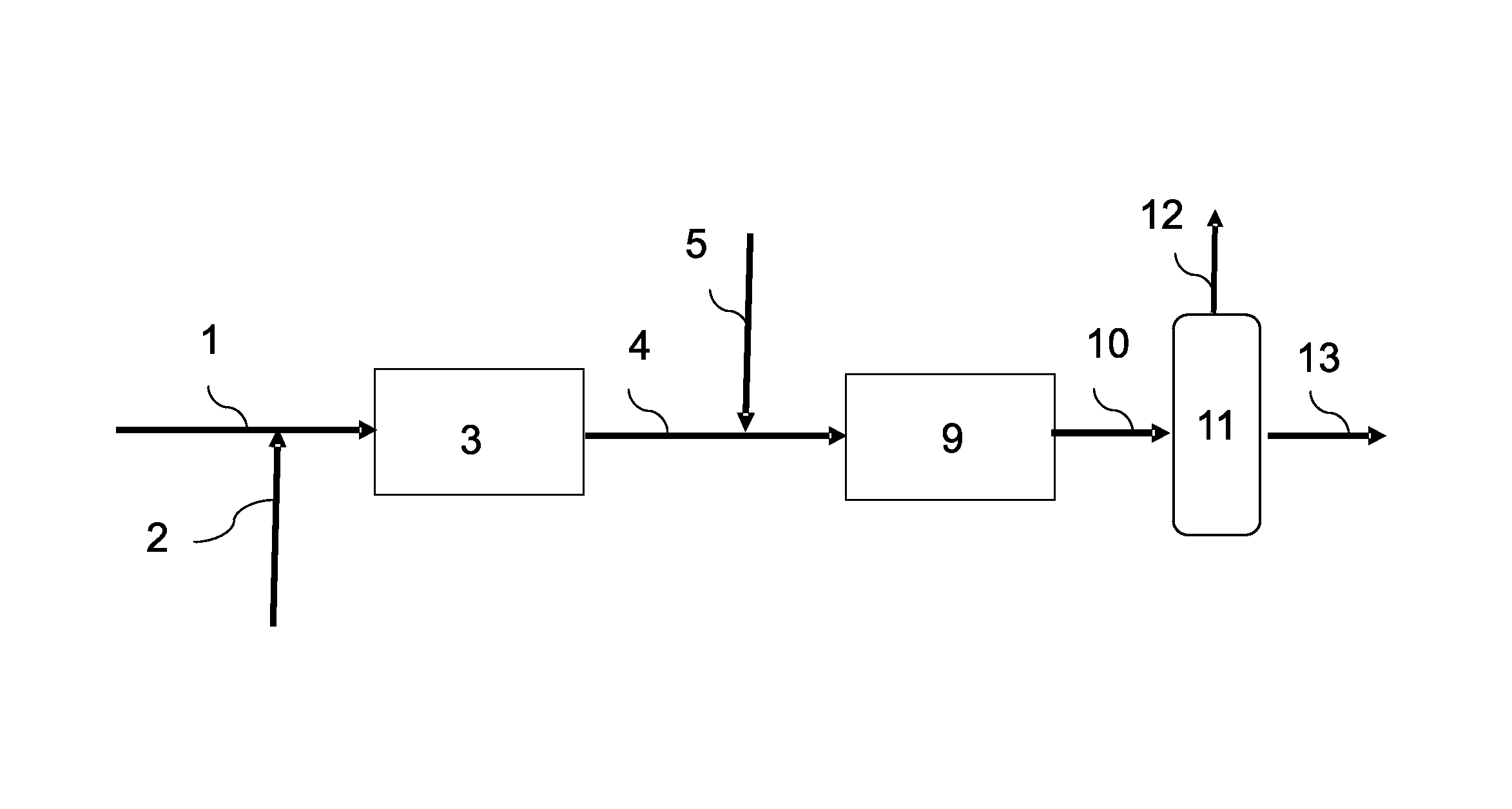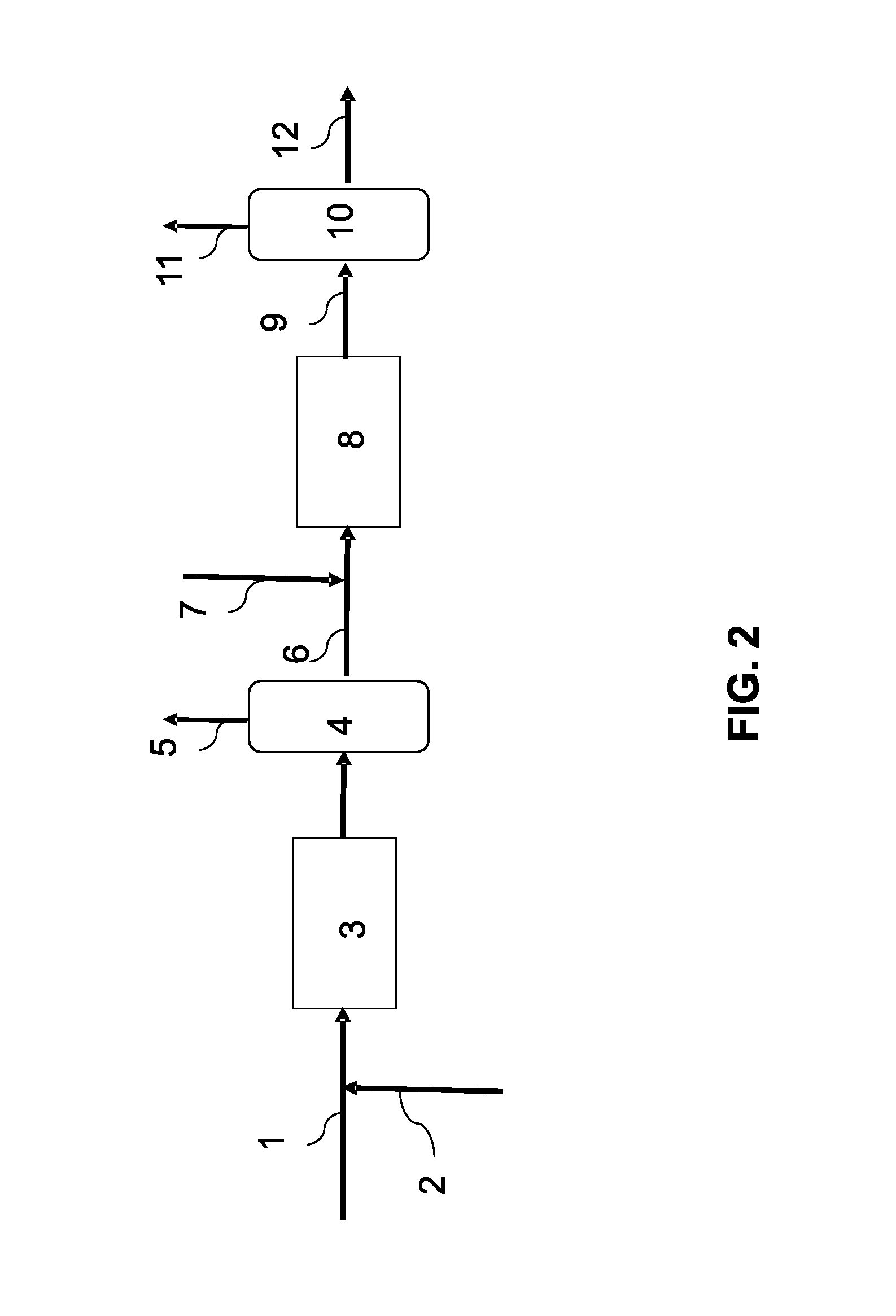Process for conversion of feedstocks obtained from renewable sources based on marine fuels
a technology of marine fuels and feedstocks, applied in the field of process for treating feedstocks obtained from renewable sources, can solve the problems of low yield of diesel fuel bases obtained according to this process, high consumption of hydrogen, and insufficient hydrogen yield, and achieve the effect of lowering the viscosity of residues
- Summary
- Abstract
- Description
- Claims
- Application Information
AI Technical Summary
Benefits of technology
Problems solved by technology
Method used
Image
Examples
example 1
Stage a): Hydrotreatment
[0103]Introduced into a reactor whose temperature is regulated in such a way as to ensure an isothermal functioning and with a fixed bed charged with 190 ml of hydrotreatment catalyst HR548™ based on nickel and molybdenum marketed by the Axens Company, with the catalyst being sulfurized in advance, is 170 g / h of pre-refined canola oil with a density of 920 kg / m3, not containing aromatic compounds and having a sulfur content of less than 10 ppm by weight, with a cetane number of 35 and whose fatty acid composition is presented in detail below:
[0104]
Fatty Acid GlyceridesNature of Fatty Chain% by MassPalmiticC16:04PalmitoleicC16:1StearicC18:02OleicC18:161LinoleicC18:220LinolenicC18:39ArachidicC20:0GadoleicC20:11BehenicC22:0ErucicC22:1
[0105]700 Nm3 of hydrogen / m3 of feedstock is introduced into the reactor kept at a temperature of 300° C. and at a pressure of 5 MPa.
Stage b): Separation of the Effluent that is Obtained from Stage a)
[0106]The entire hydrotreated ef...
PUM
| Property | Measurement | Unit |
|---|---|---|
| pressure | aaaaa | aaaaa |
| pressure | aaaaa | aaaaa |
| temperature | aaaaa | aaaaa |
Abstract
Description
Claims
Application Information
 Login to View More
Login to View More - R&D
- Intellectual Property
- Life Sciences
- Materials
- Tech Scout
- Unparalleled Data Quality
- Higher Quality Content
- 60% Fewer Hallucinations
Browse by: Latest US Patents, China's latest patents, Technical Efficacy Thesaurus, Application Domain, Technology Topic, Popular Technical Reports.
© 2025 PatSnap. All rights reserved.Legal|Privacy policy|Modern Slavery Act Transparency Statement|Sitemap|About US| Contact US: help@patsnap.com



